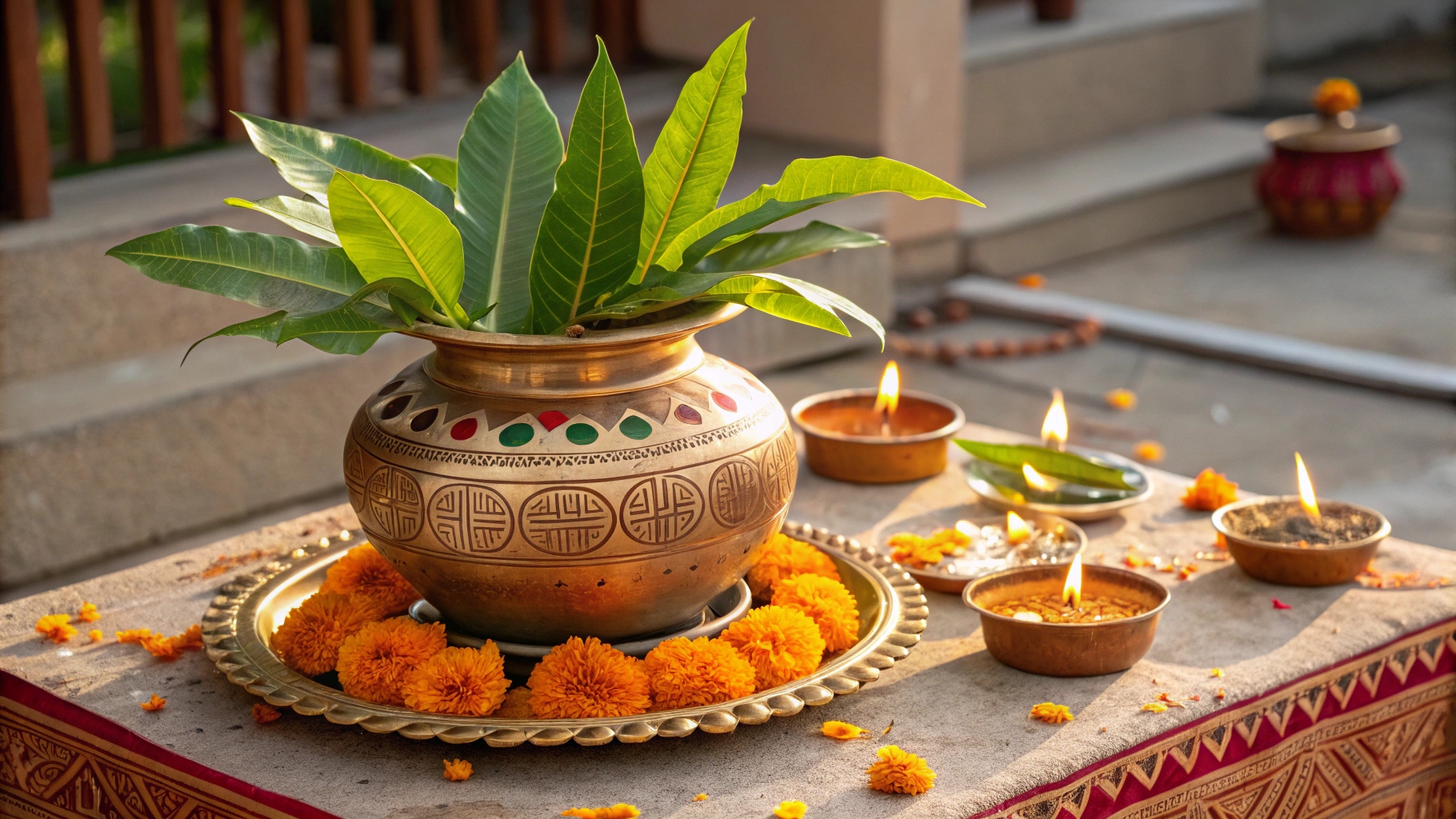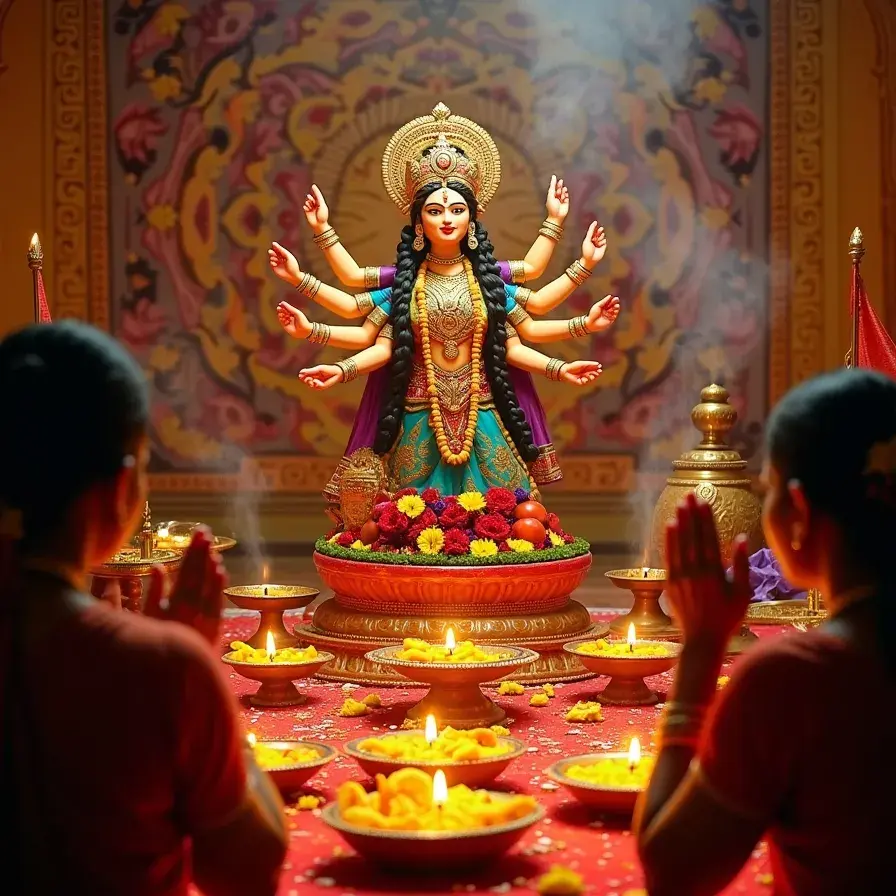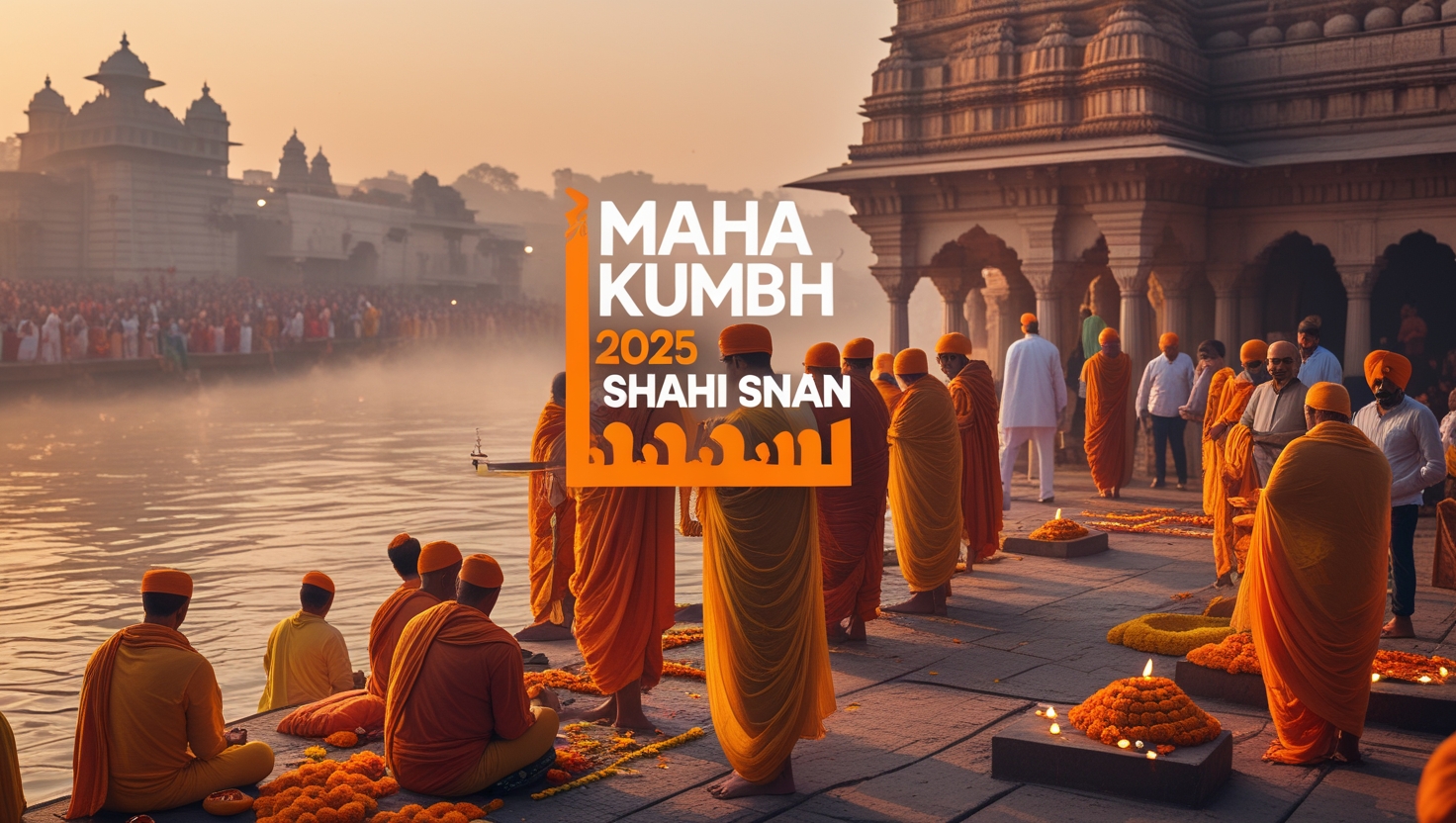Chaitra Navratri 2025 is one of the most anticipated spiritual celebrations in the Hindu calendar. As the festival start of a new year (नववर्ष – Nav Varsh), it is a time for introspection, purification, and renewal. The nine-day festival is dedicated to Maa Durga and her nine different forms, symbolizing the victory of light over darkness and the triumph of good over evil.
In today’s fast-paced world, the observance of Chaitra Navratri 2025 offers a welcome pause—a moment to reconnect with tradition, practice mindfulness, and immerse oneself in age-old rituals that invoke divine blessings. Throughout this guide, we will use natural variations and long-tail keywords such as Navratri 2025, divine Navratri celebrations, and festive Navratri rituals to help you gain a deeper understanding of this culturally rich event.
Chaitra Navratri 2025 Dates & Muhurat
One of the most crucial aspects of celebrating Chaitra Navratri 2025 is knowing the precise dates and auspicious timings. According to the Drik Panchang, the festival will begin on March 30, 2025 and conclude on April 7, 2025. The highlight is Ram Navami on April 6, which holds special importance as it commemorates the birth of Lord Rama.
Below is a detailed table summarizing the important muhurats (auspicious timings) and events during Chaitra Navratri 2025:
| Event | Date | Time | Duration | Description |
|---|---|---|---|---|
| Chaitra Ghatasthapana | March 30, 2025 | 06:13 AM – 10:22 AM | 04 Hours 08 Minutes | Auspicious time to install the Kalash (sacred pot) to invoke Maa Durga. |
| Ghatasthapana Abhijit Muhurat | March 30, 2025 | 12:01 PM – 12:50 PM | 50 Minutes | Secondary window for commencing Ghatasthapana rituals. |
| Pratipada Tithi Begins | March 29, 2025 | 04:27 PM | – | Ending of the previous tithi, marking the prelude to Navratri celebrations. |
| Pratipada Tithi Ends | March 30, 2025 | 12:49 PM | – | End of the first tithi, significant for initiating new rituals. |
| Ram Navami | April 6, 2025 | As per local sunrise/sunset timings | – | Celebrates the birth of Lord Rama, an integral part of the Navratri celebrations. |
These muhurats are essential for ensuring that every ritual performed during Chaitra Navratri 2025 is aligned with cosmic timings, thus maximizing spiritual efficacy and the flow of divine blessings.
Historical Background of Chaitra Navratri 2025
The origins of Chaitra Navratri are steeped in mythological lore and historical significance. Legend has it that Maa Durga was created by the combined energies of the Hindu trinity—Lord Brahma, Lord Vishnu, and Lord Shiva—to vanquish the formidable demon Mahishasura (महिषासुर). This epic battle, which is commemorated over the course of nine days, signifies the eternal struggle between good (सत्य – Satya) and evil (असत्य – Asatya).
In addition, Chaitra Navratri 2025 is observed as the beginning of the Hindu New Year in several regions of India. For instance, in Maharashtra, the festival coincides with Gudi Padwa—a vibrant celebration marked by the hoisting of a ‘Gudi’ (गुढी) that symbolizes victory and prosperity.
Furthermore, the festival is intertwined with the story of Lord Rama, who is believed to have sought the blessings of Maa Durga before embarking on his journey to defeat the demon king Ravan (रावण). This sacred association reinforces the idea that Chaitra Navratri 2025 is not merely a ritualistic observance but also a time for spiritual preparation and self-reflection.
Spiritual Significance and Renewal
Chaitra Navratri 2025 is not just about rituals; it is a profound period of spiritual renewal and introspection. The festival carries multiple layers of significance:
- Triumph of Good Over Evil:
The nine days of Navratri symbolize the ultimate victory of truth and righteousness. This powerful reminder encourages devotees to overcome personal vices and embrace virtues like compassion and honesty. - Renewal and Rebirth:
With the onset of spring, nature comes alive in all its splendor. This seasonal rejuvenation mirrors the spiritual renewal that devotees experience during Chaitra Navratri 2025. It is a time to set new intentions and clear the mind of past negativities. - Embodying Divine Feminine Energy:
Celebrating the various forms of Maa Durga, the festival underscores the importance of Shakti (शक्ति – divine energy). Each day of Chaitra Navratri 2025 highlights a different aspect of the Goddess, inspiring devotees to harness the strengths of courage, wisdom, and nurturing love. - Spiritual Discipline Through Fasting:
Fasting during Navratri is not only a physical exercise but also a means to purify the mind and soul. Observing the vrat (व्रत – fast) helps individuals cultivate discipline, focus, and inner calm.
Through these aspects, Chaitra Navratri 2025 serves as a beacon of hope and renewal, inviting everyone to cleanse their spirit, reconnect with their inner selves, and embrace the journey towards self-improvement.
Rituals and Traditions
The rituals observed during Chaitra Navratri 2025 are rich in symbolism and steeped in tradition. These practices are designed to honor Maa Durga and invite her divine presence into the home.
Ghatasthapana (Kalash Sthapana)
The festival begins with the solemn ritual of Ghatasthapana, also known as Kalash Sthapana. This involves setting up a sacred pot (कलश) that is filled with water, adorned with mango leaves (आम के पत्ते), and crowned with a coconut (नारियल). The Kalash is symbolic of the womb of the Goddess and represents the creation of the universe.

Steps for Ghatasthapana:
- Preparation:
Clean and decorate the designated area with fresh flowers (फूल) and turmeric (हल्दी). Tie a sacred thread to enhance the auspiciousness of the setup. - Filling the Kalash:
Fill the pot with pure water and add mango leaves to signify fertility and life. - Placing the Coconut:
Position the coconut on top of the Kalash to symbolize the head of the Goddess, ensuring it is stable and secure. - Invocation:
Chant mantras dedicated to Maa Durga and invite her divine presence. Ensure that the ritual is performed during the prescribed muhurat for maximum spiritual benefit. - Completion:
Once the Kalash is set up, continue with other puja rituals to officially inaugurate Chaitra Navratri 2025.
Daily Puja and Fasting
Throughout the nine days, devotees engage in daily puja (पूजा) and observe fasting rituals (व्रत पालन). These practices are crucial for spiritual purification and discipline. Devotees set up home altars, light lamps, and recite sacred texts such as the Durga Saptashati (दुर्गा सप्तशती) to honor the Goddess.

Key practices include:
- Morning Rituals:
Beginning each day with prayers, meditation, and the offering of water, milk, and flowers to the deity. - Observing the Vrat:
Consuming vrat-friendly foods such as sabudana (साबूदाना), kuttu ka atta (कुट्टू का आटा), and seasonal fruits while abstaining from grains and salt.
Kanya Pujan
Kanya Pujan (कन्या पूजा) is a heartwarming tradition observed during Navratri. Families invite young girls (कन्या) into their homes, honor them as embodiments of the Goddess, and offer prasad (प्रसाद) along with other gifts. This ritual reinforces the importance of the divine feminine and serves as a reminder to nurture and respect young girls in society.
A Day-by-Day Guide to the Nine Days
Each day of Chaitra Navratri 2025 is dedicated to a unique aspect of Maa Durga. Below is a detailed guide for each day, including the significance, rituals, and mantras:

प्रथमः – शैलपुत्री (Shailaputri)
- Significance:
Maa Shailaputri, the daughter of the mountains (शैलपुत्री), symbolizes strength, stability, and perseverance. - Rituals:
Devotees perform special puja by offering water, milk, and fresh flowers to invoke her blessings. - Mantra:
“ॐ ऐं शैलपुत्र्यै नमः” (Om Aing Shailaputryai Namah) is chanted to honor her presence.
द्वितीयः – ब्रह्मचारिणी (Brahmacharini)
- Significance:
Symbolizing penance and devotion, Maa Brahmacharini teaches self-discipline and inner focus. - Rituals:
The day is dedicated to meditation, silent prayer, and reciting devotional hymns. - Mantra:
“ॐ ऐं ब्रह्मचारिण्यै नमः” (Om Aing Brahmacharinyai Namah) helps invoke her divine grace.
तृतीयः – चन्द्रघण्टा (Chandraghanta)
- Significance:
Representing courage and serenity, Maa Chandraghanta inspires strength in the face of challenges. - Rituals:
Offerings typically include silver or white flowers and traditional sweets. - Mantra:
Chant “ॐ ऐं चंद्रघंटायै नमः” (Om Aing Chandraghantyai Namah) to welcome her energy.
चतुर्थः – कूष्माण्डा (Kushmanda)
- Significance:
Credited with creating the universe (सृष्टि), Maa Kushmanda symbolizes cosmic energy and creativity. - Rituals:
Devotees light lamps and perform aarti to celebrate the creative power of the Goddess. - Mantra:
“ॐ ऐं कुश्मांडायै नमः” (Om Aing Kushmandyai Namah) is recited during puja.
पञ्चमः – स्कन्दमाता (Skandamata)
- Significance:
As the nurturing mother of Lord Kartikeya, Maa Skandamata epitomizes compassion and maternal love (ममता). - Rituals:
Rituals include offering fruits, milk, and other nourishing foods as a sign of gratitude. - Mantra:
“ॐ ऐं स्कंदमात्यै नमः” (Om Aing Skandamatyai Namah) is chanted for her blessings.
षष्ठः – कात्यायनी (Katyayani)
- Significance:
Celebrated as a fierce warrior goddess (योद्धा), Maa Katyayani inspires determination and valor. - Rituals:
Devotees offer red flowers and sweets while performing special puja rituals to harness her strength. - Mantra:
“ॐ ऐं कट्यायन्यै नमः” (Om Aing Katyayanyai Namah) is the mantra for this day.
सप्तमः – कालरात्रि (Kalaratri)
- Significance:
Embodying the destruction of darkness (अंधकार) and negative forces, Maa Kaalratri is revered for her fierce energy. - Rituals:
The day is observed with intense prayers and meditative practices to seek protection from evil. - Mantra:
“ॐ ऐं कालरात्र्यै नमः” (Om Aing Kaalratryai Namah) is recited to invoke her might.
अष्टमः – महागौरी (Mahagauri)
- Significance:
Known for purity and calmness (पवित्रता), Maa Mahagauri brings wisdom and serenity. - Rituals:
Special aartis and offerings of white flowers are made to honor her. - Mantra:
“ॐ ऐं महागौर्यै नमः” (Om Aing Mahagauryai Namah) is the sacred chant for her.
नवमः – सिद्धिदात्री (Siddhidatri)
- Significance:
The final day is dedicated to Maa Siddhidatri, the bestower of siddhi (सिद्धि) and success, granting spiritual and material fulfillment. - Rituals:
Elaborate prayers culminate in Kanya Pujan and final offerings, marking the end of Chaitra Navratri 2025. - Mantra:
“ॐ ऐं सिद्धिदात्रियै नमः” (Om Aing Siddhidatryai Namah) is the concluding mantra.
Regional Celebrations and Cultural Variations
While the essence of Chaitra Navratri 2025 remains uniform, regional traditions add unique flavors to the festivities. Here are a few variations from across India:
North India
- Temple Rituals and Bhajan Kirtan:
In northern regions such as Uttar Pradesh and Rajasthan, elaborate temple rituals accompanied by bhajan (devotional songs) and kirtans are organized. Devotees gather to sing and celebrate the divine presence of Maa Durga. - Home Altars:
Families decorate their home altars with marigold (गेंदा) and jasmine (चमेली) flowers. The vibrant colors and fragrant aromas create an inviting space for daily worship.
Maharashtra
- Gudi Padwa Celebrations:
In Maharashtra, Chaitra Navratri coincides with the Marathi New Year, known as Gudi Padwa. Homes are adorned with a ‘Gudi’—a festive flag that symbolizes victory, prosperity, and a fresh start. - Community Events:
Cultural programs and processions highlight the day, uniting communities in collective celebrations.
South India
- Ugadi Festivities:
For many South Indians, the festival aligns with Ugadi, the Telugu and Kannada New Year. Special dishes such as Ugadi Pachadi, which blend sweet, sour, and spicy flavors, are prepared to signify the diverse experiences of life. - Temple Processions:
Elaborate processions and temple rituals are common, reinforcing community bonds and spiritual commitment.
West Bengal & Odisha
- Devi Puja and Rangoli:
In these regions, the festival is marked by intricate Devi Puja ceremonies and the creation of elaborate rangoli designs at home. The artistic expressions reflect the deep cultural heritage and devotion towards the Goddess. - Community Feasts:
Special communal meals are organized, highlighting the unity and celebratory spirit of Navratri.
Food, Fasting, and Vrat Recipes
A significant aspect of Chaitra Navratri 2025 is the dietary discipline that accompanies the festival.
Vrat-Friendly Foods
- Sabudana (साबूदाना):
Used in various dishes such as khichdi, sabudana provides essential carbohydrates while being light on the stomach. - Kuttu Ka Atta (कुट्टू का आटा):
Buckwheat flour, commonly used to make rotis and puris, is a staple during the fasting period. - Singhare Ka Atta (सिंगारे का आटा):
Water chestnut flour that is ideal for preparing snacks and special dishes. - Fruits and Nuts:
A mix of seasonal fruits, dry fruits, and nuts supplies vitamins and healthy fats, keeping the body nourished during fasting. - Dairy:
Milk, yogurt, and paneer play an important role in providing essential proteins while adhering to the vrat guidelines.
Do’s and Don’ts During Chaitra Navratri 2025
Observing the correct practices during the festival is essential for maintaining both physical and spiritual purity. Below are some guidelines to follow during Chaitra Navratri 2025:
Do’s:
- Observe Fasting with Devotion:
Approach fasting (व्रत) as a means of spiritual purification, choosing only vrat-friendly foods. - Create a Sacred Space:
Set up a clean and aesthetically pleasing altar. Use fresh flowers, incense, and holy water to sanctify the space for daily worship. - Chant Devotional Mantras:
Recite mantras dedicated to Maa Durga and her forms to build a deeper connection during Chaitra Navratri 2025. - Practice Mindfulness and Meditation:
Utilize this period to reflect, meditate, and set new intentions for the year ahead. - Respect Traditions:
Honor your family’s customs and regional practices, such as Kanya Pujan, and engage in community celebrations.
Don’ts:
- Avoid Prohibited Foods:
Stay away from grains, salt (नमक), and other items not permitted during the fasting period. - Refrain from Negative Activities:
The festival is a time for spiritual cleansing; avoid conflicts, gossip, or any behavior that might disturb the inner peace. - Do Not Overindulge:
Moderation is key. Overeating or indulging in forbidden foods can detract from the spiritual essence of Chaitra Navratri 2025.
Conclusion
Chaitra Navratri 2025 offers an inspiring blend of cultural heritage, spiritual renewal, and community celebration. As the festival commences on March 30, 2025, devotees across the nation are invited to cleanse their souls, reconnect with ancient traditions, and set a positive tone for the new year. Through carefully timed muhurats, detailed rituals such as Ghatasthapana and Kanya Pujan, and a commitment to fasting and self-reflection, this Navratri is more than just a festival—it is a journey towards inner transformation.
Whether you are following the elaborate temple ceremonies in North India, celebrating Gudi Padwa in Maharashtra, embracing Ugadi in South India, or participating in the vibrant Devi Puja in West Bengal and Odisha, Chaitra Navratri 2025 stands as a testament to the timeless values of faith, perseverance, and renewal.
As you immerse yourself in the sacred observances of Navratri, remember that the essence of this festival is the triumph of good over evil. With each mantra chanted, every prayer offered, and every fasting day observed, you are part of a tradition that spans millennia—a tradition that continues to inspire and uplift.
Happy Chaitra Navratri 2025!


